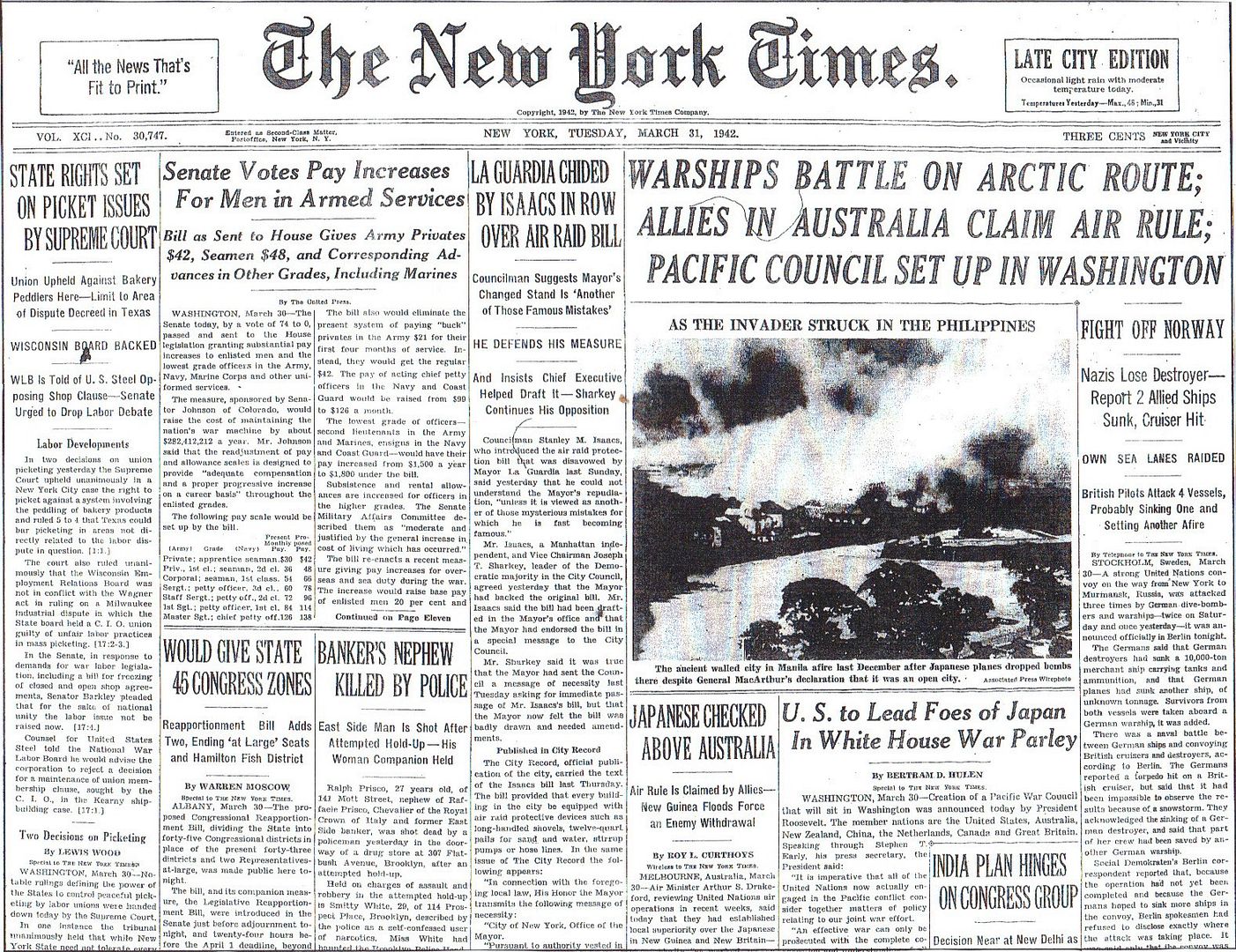
Posted on 03/31/2012 4:24:55 AM PDT by Homer_J_Simpson

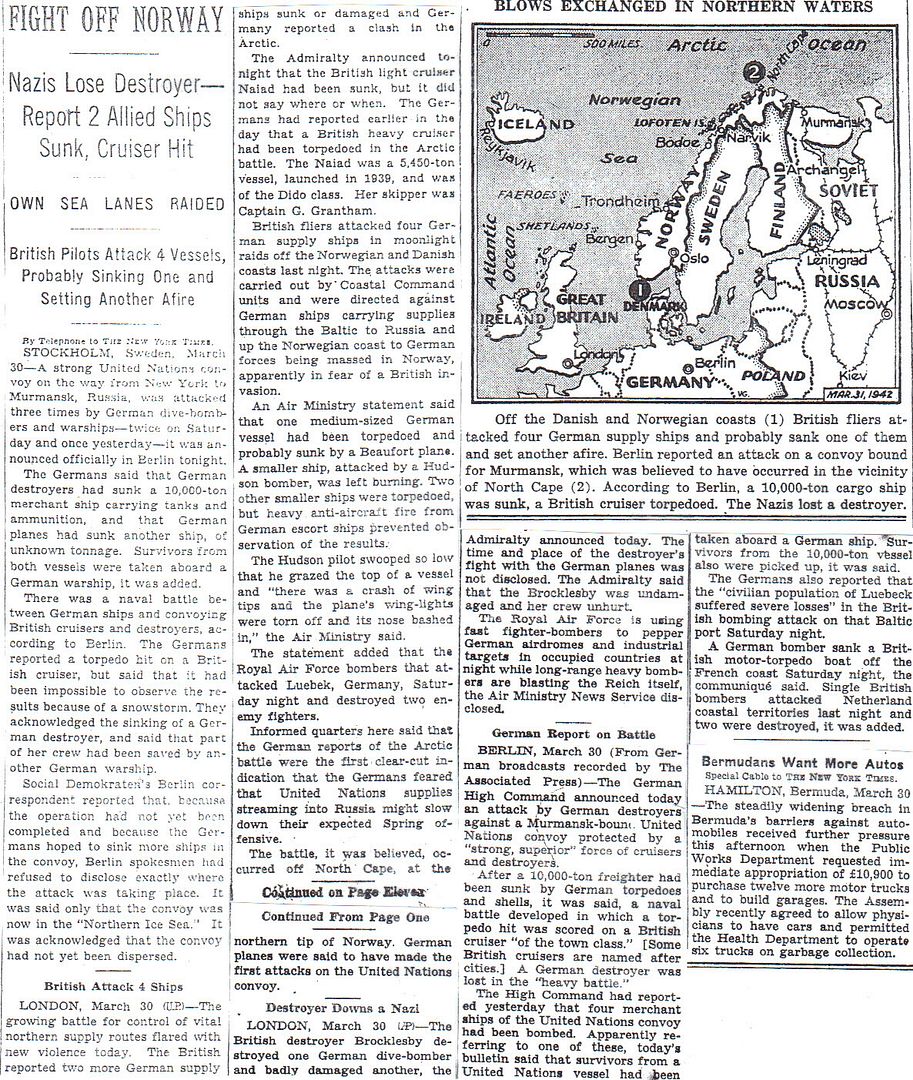
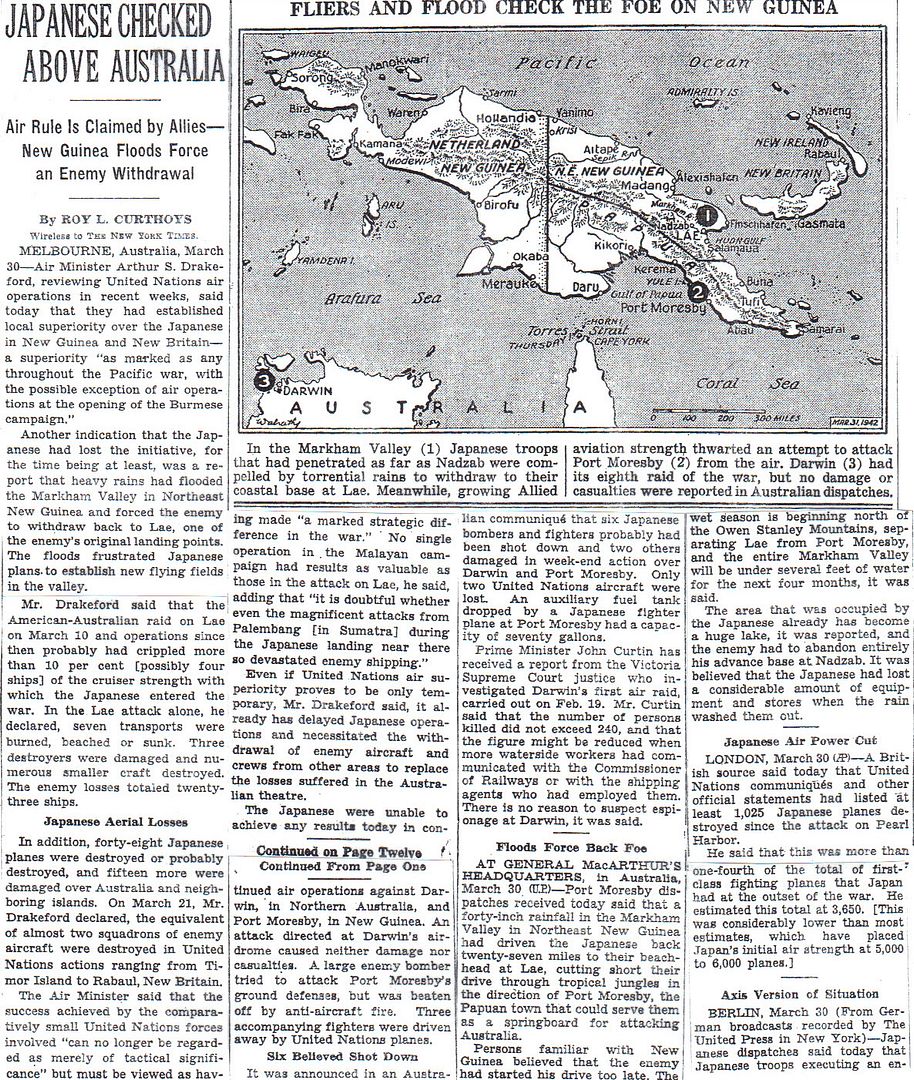
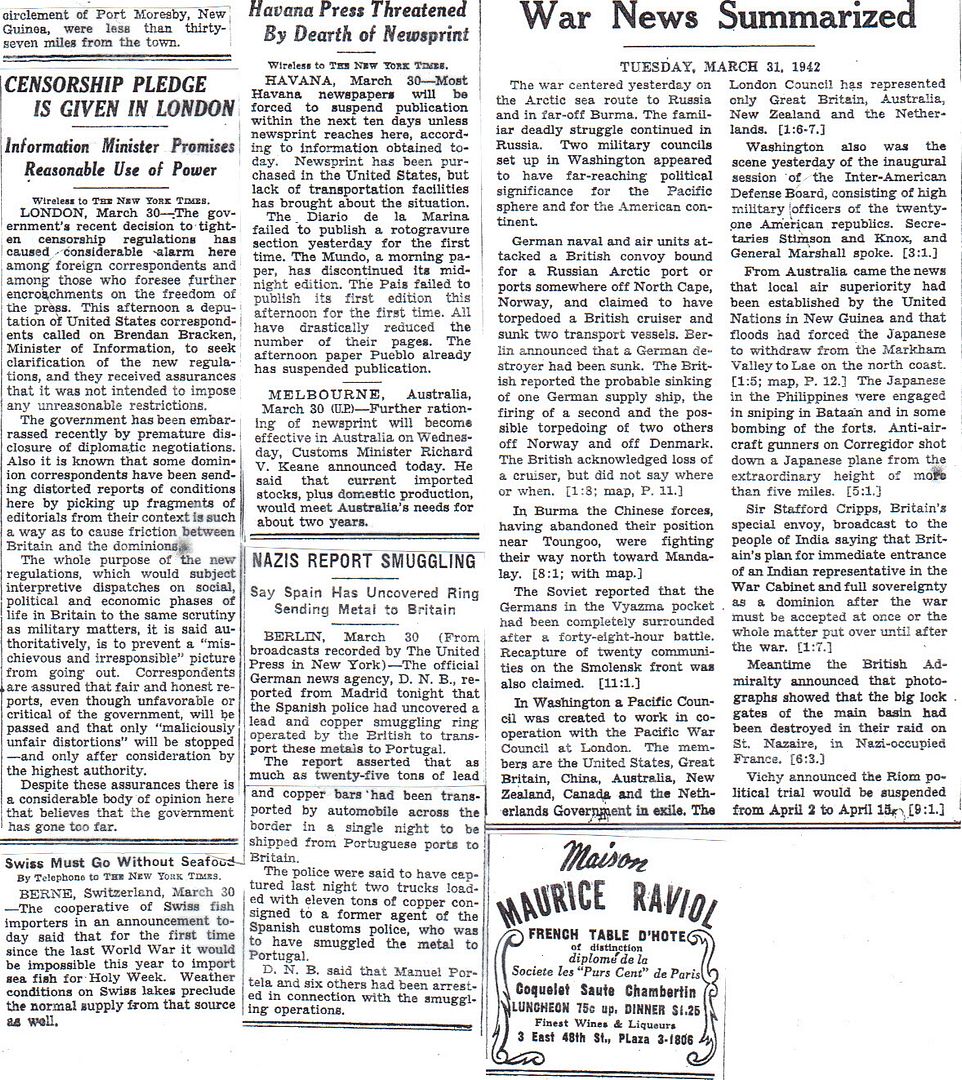
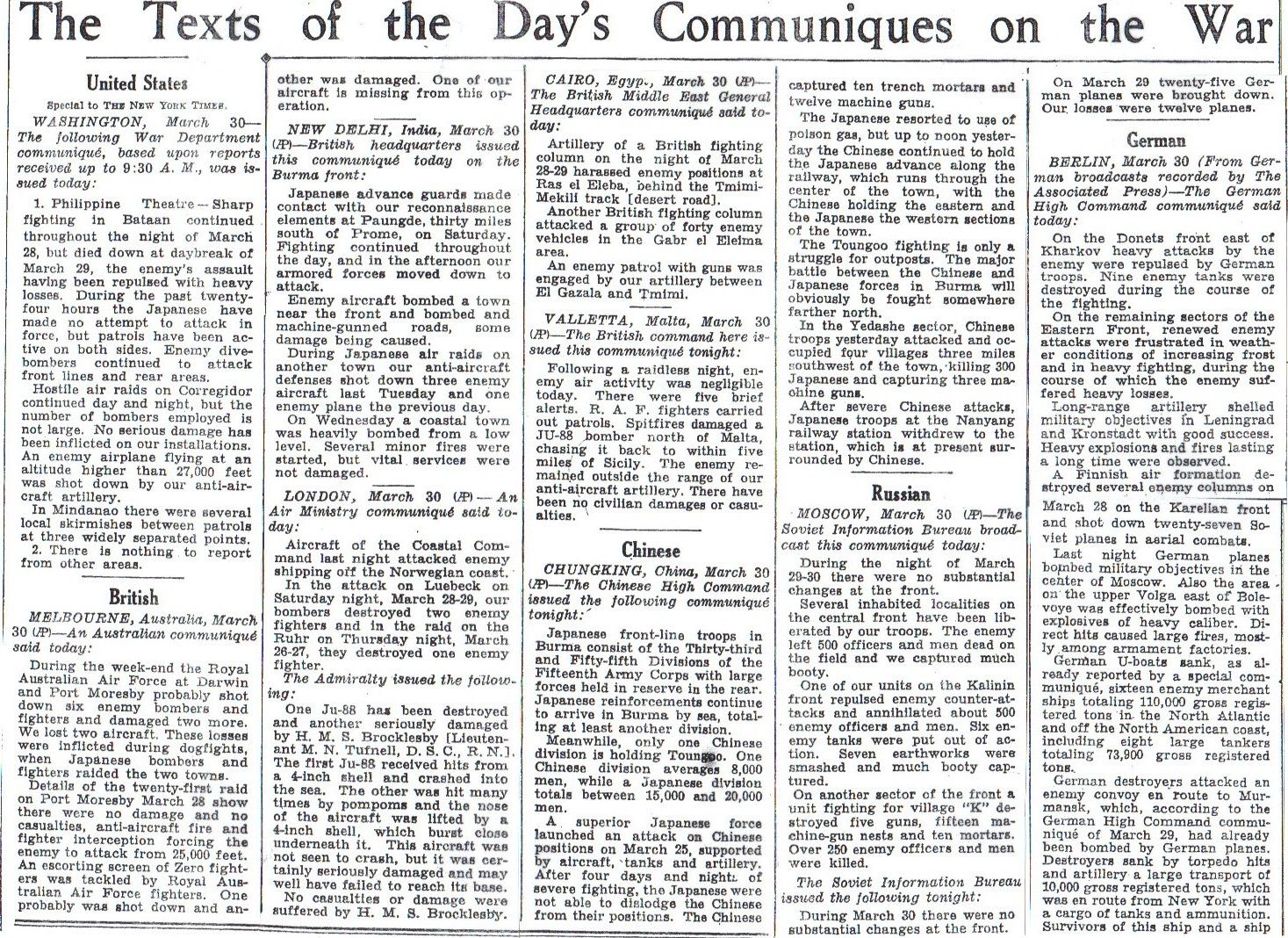
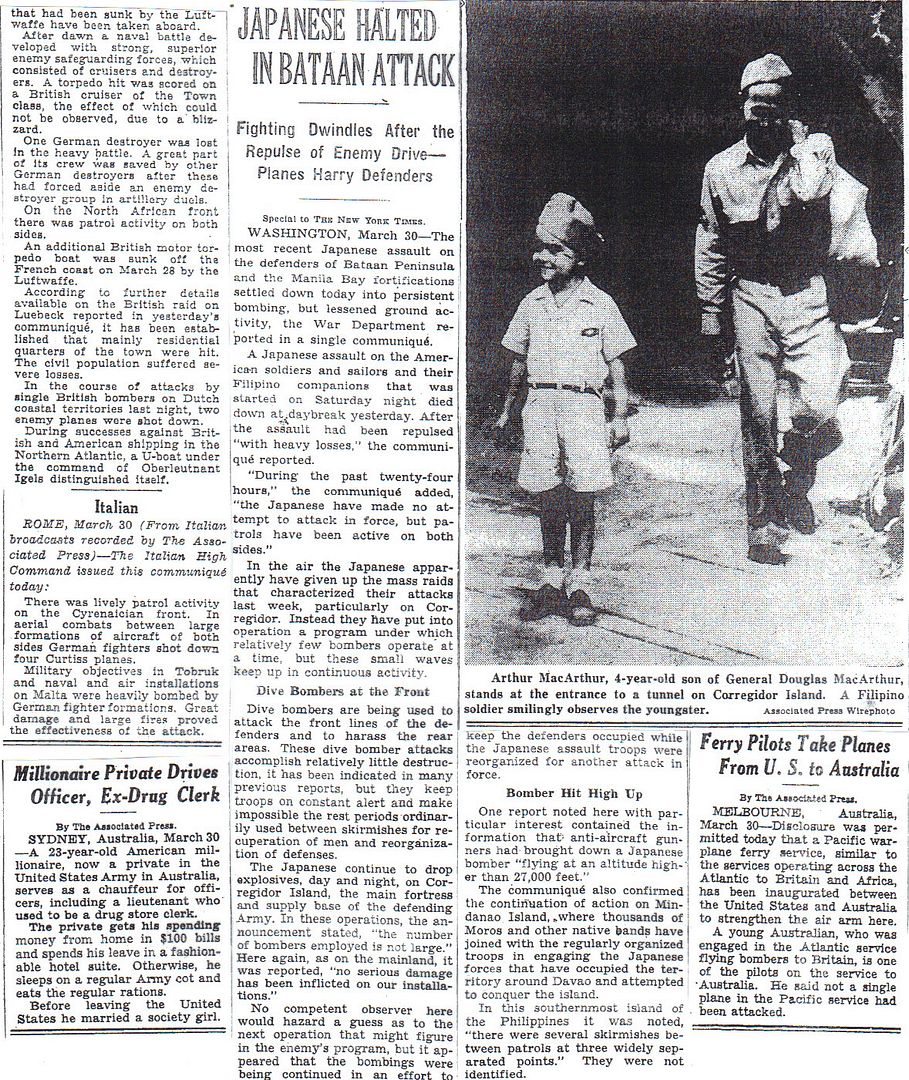
* The photo was part of a half-page pictorial look at recent events in the Philippines. Young Arthur MacArthur is now in Australia with mom and pop.
http://www.onwar.com/chrono/1942/mar42/f31mar42.htm
Chinese forces in Burma retreat
Tuesday, March 31, 1942 www.onwar.com
General Stillwell with a Chinese officer [photo at link - Homer]
In Burma... General Stilwell’s attempt to relieve pressure on the Chinese armies with a British attack fails and the Chinese forces must withdraw from Toungoo.
In the Indian Ocean... Admiral Somerville responds to intelligence concerning a coming Japanese attack by its main carrier forces, by moving the British Eastern Fleet from Ceylon. Somerville plans to avoid detection during the day and hunt the Japanese ships by night as the British have a tactical advantage in night operations.
http://homepage.ntlworld.com/andrew.etherington/frame.htm
The bit below from Territory of Hawaii looks to be about a year out of date - Homer.
March 31st, 1942
GERMANY: During the day, RAF Bomber Command dispatches 11 Hampdens and six Wellingtons on a cloud cover raids to Germany; six aircraft find targets to bomb. (Jack McKillop)
During the night of the 31st/1 April, four RAF Bomber Command Wellingtons, with selected crews using Gee, are dispatched to Essen but only one bombs; a second aircraft bombs Hamborn. (Jack McKillop)
INDIA: The Congress Party demands immediate independence.
CEYLON: The British Eastern Fleet under the command of Vice Admiral Sir James Somerville consisting of the aircraft carriers HMS Formidable, Hermes and Indomitable; five old battleships; six British and two Dutch cruisers; and 15 destroyers, sail from Colombo after being warned of the approach of a Japanese fleet. The Japanese force under Vice Admiral KONDO Nobutake consists of the battleships HIJMS Haruna, Hiei, Kirishima and Kongo; the aircraft carriers HIJMS Akagai, Hiryu, Shokaku, Soryu and Zuikaku; heavy cruisers HIJMS Chikuma and Tone; light cruiser HIJMS Abukuma; and nine destroyers. (Jack McKillop)
BURMA: After a fierce ten-day battle, Japan takes Toungoo from the Chinese expeditionary force. The Chinese 200th Division makes contact with the Chinese 22d Division north of Toungoo and withdraws north of Pyinmana as a reserve. With the loss of Toungoo, the road to Mawchi is left undefended and the Japanese, during the next few days, overrun the small Chinese garrison at Mawchi and then continue east, forcing elements of the Chinese Temporary 55th Division (T-55th) of the Chinese 6th Army back to Bawlake. (Jack McKillop)
NETHERLANDS EAST INDIES: Four RAAF Hudsons of Nos. 2 and 13 Squadrons operating from Darwin, Northern Territory, Australia, bomb Penfui Airfield on Dutch West Timor Island. The Australians destroy at least six aircraft on the ground and four flying boats in the harbor. (Jack McKillop)
NEW GUINEA: The 8th Bombardment Squadron (Light) transfers from Charters Towers, Queensland, Australia to Port Moresby, New Guinea, with six A-24 Dauntlesses; they fly their first mission tomorrow. (Jack McKillop)
NEW ZEALAND: New Zealand now has 61,368 servicemen overseas, 52,712 of them in the Army. Home Guard strength is 100,000. (Jack McKillop)
TERRITORY OF HAWAII: Major General F. L. Martin, Commanding General Hawaiian Air Force, and Rear Admiral PNL Bellinger, Commander Naval Base defence Air Force, prepare a joint estimate covering Joint Army and Navy air action in the event of sudden hostile action against Oahu or Fleet Units in the Hawaiian area. Part III “Possible enemy action” states that “a declaration of war might be preceded by: (1) a surprise submarine attack on-ships in the operating area, (2) a surprise attack on Oahu including ships and installations in Pearl Harbor, or (3) a combination of these two.” The conclusion is that “it appears that the most likely and dangerous form of attack on Oahu would be an air attack. It is believed that at present such an attack would most likely be launched from one or more carriers which would probably approach inside of 300 miles (483 kilometres).” (Jack McKillop)
U.S.A.: In Washington, Major General Carl Spaatz suggests that the now “task-less HQ 8th Air Force” be shipped to the U.K. to assume operational control of the units assigned to Army Air Forces in Britain (AAFIB). (Jack McKillop)
ATLANTIC OCEAN: German submarine U-754 sinks two U.S. merchant ships off the U.S. East Coast near Norfolk, Virginia. (1) Unarmed tug Menominee and the barges that she is towing, Allegheny, Barnegat, and Ontario, are shelled by U-754 about 53 miles northeast of Virginia Beach, Virginia; the tug and barges Allegheny and Barnegat sink but barge Ontario, with its dunnage cargo, remains afloat and provides a life preserver for the three men who had been on board each barge. Only two of the 18-man tug boat crew and the nine men on the barges survive. (2) Later in the day, the sub torpedoes an unarmed tanker as the ship, en route to Norfolk, Virginia, waits to embark a pilot. One crewman dies in the initial explosion. (Jack McKillop)
An unarmed U.S. tanker en route to Caripito, Venezuela from Buenos Aires, Argentina, is shelled, torpedoed, and sunk by Italian submarine Pietro Calvi about 513 miles east northeast of Cayenne, French Guiana; 2 crewmen on the tanker are lost. (Jack McKillop)
A tactical advantage in night operations against the Japanese? Hasn’t Summerville been briefed on Sunda Strait? Has he heard of the “Long Lance” torpedo?
Per BLS inflation calculator, $126 in 1941 was equivalent to $1,951.40 in 2012 dollars. The $138 in 1941 was equivalent to $2,137.24 in 2012 dollars.
It's easy to understand why at 4 times the pay plus bonuses, men volunteered for the AVG "Flying Tigers".
Disclaimer: Opinions posted on Free Republic are those of the individual posters and do not necessarily represent the opinion of Free Republic or its management. All materials posted herein are protected by copyright law and the exemption for fair use of copyrighted works.